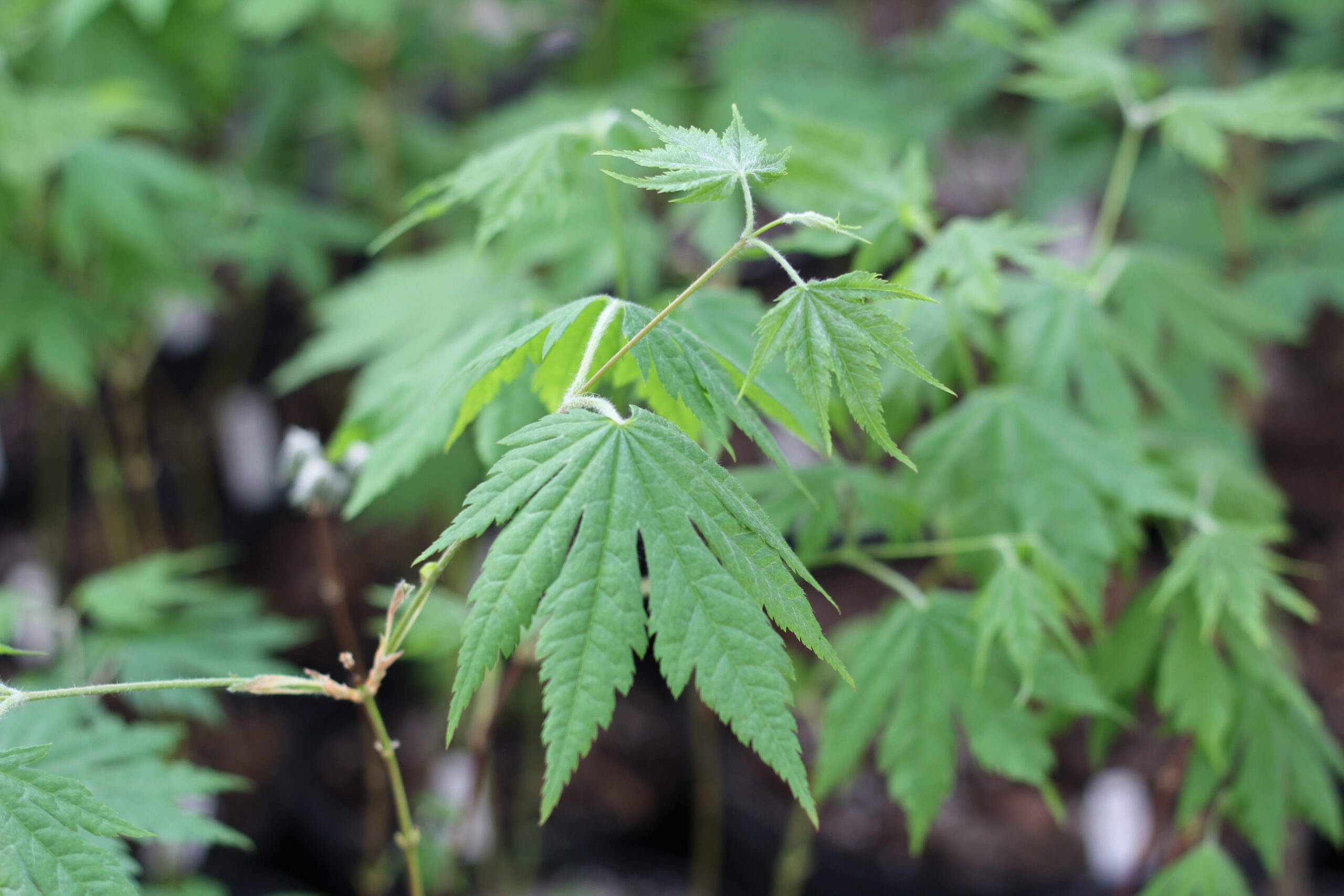
Written by Andrew Adams
With many new gardeners entering the scene, and even veteran gardeners re-evaluating areas of their garden, we thought now would be a great time to feature edible woody plants! The year’s selection includes some strong contenders for that open spot in your garden, working double time for your aesthetic and your table!
One larger genus we all know and love is Vaccinium. Blueberries and cranberries run the show in this group! We reached out to a few different farmers in the local area (mostly New Jersey) and gathered the cultivars they in fact use for commercial growing, so we believe these are some of the best berry producers around! Vaccinium ‘Cara’s Choice’ may be the main cultivar used by farmers in the region. Medium sized fruit, a shortened ripening cycle, and high yields make this an excellent choice, no pun intended! We are offering V. macrocarpon in this sale as well. Cranberries can be used for a great many things on the table including jams, jellies, and sauces. Cranberry is an excellent choice for wet and boggy areas in the garden with attractive white flowers and red fruit. Keep in mind you will want a lower soil pH for these species to really flourish! Like cranberry, the flowers of many Vaccinium species are quite beautiful in their own right, as well as offering excellent fall color. These plants are more than just crops!
Monty Python fans may also know these next fruits- did your brain go Elderberries? It should have! Jams, jellies, and syrups are among the most popular ways of enjoying these fruits which have many health and immunity-boosting benefits to them as well. The three cultivars offered in this year’s sale are: S. canadensis ‘Adams’, S. canadensis ‘Ranch’, and S. canadensis ‘Bob Gordon’; all known for their fruit production. Each cultivar has a different height at maturity so no matter the size of your beds, you can get one of these into your garden! Other cultivars of Sambucus this year include fantastic ornamental specimens, though the berries are not ideal for canning season.
Another fun edible shrub for the garden is pomegranate (Punica granatum). While labeled as marginally hardy in this area, this cultivar survives our winters here just fine, with interesting hot pink flowers in the late spring and striking fruit in the fall. It will produce fruit on its own, but sometimes our season is a couple weeks short for them to mature, so consider placing in a pot to move indoors or keep in a warmer area of the landscape for pomegranates aplenty! Figs (Ficus carica) will be in our sale as well, hardy up to Zone 5.
This year we also have some interesting vines in stock for the edible garden. Hardy Kiwi (Actinidia sp.) does fine down to Zone 5; this vigorous vining plant will appreciate a sturdy trellis and thrive in a garden setting. Keep in mind you will need a male pollinator to get the prize at the end of the season. Another classic vine we’ll offer is Concord Grape (Vitis lambrusca). Suitable for smaller spaces with the help of a trellis, concords are a time-tested backyard variety.
Another well known fruit, Raspberry (Rubus sp.) will be available as well. These black raspberries bear fruit in the fall, and have about triple the harvest length of a typical raspberry, and all of the flavor!
For a larger presence, pawpaws (Asimina triloba) and persimmons (Diospyros virginiana) are fruit bearing trees, excellent for lining the outer edges of your garden. While both make delicious fruit, you do have to be on your toes as the squirrels are gunning for the fruits as well! Since these plants like to form stands over time, there will be enough to share in later seasons. Chokecherry (Prunus virginiana) is another quite edible fruiting tree (contrary to the name) and is a fantastic native species with a bitter taste commonly used in preserves. This species is a magnet for a wide range of Lepidoptera caterpillar! Last, serviceberries (Amelanchier sp.) are great raw or for jams and jellies along with the added bonus of a beautiful white bloom in spring and fiery color in autumn.




